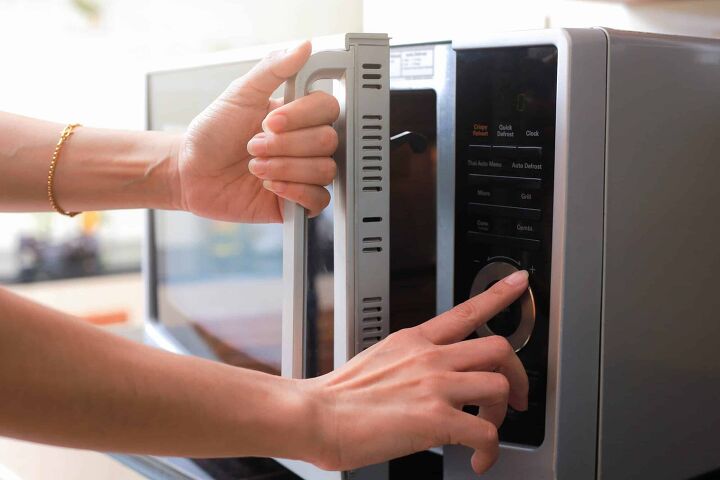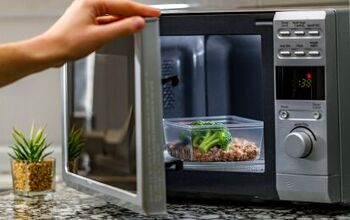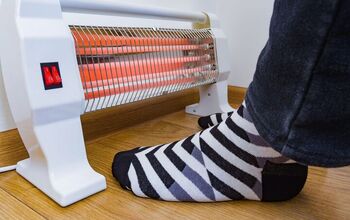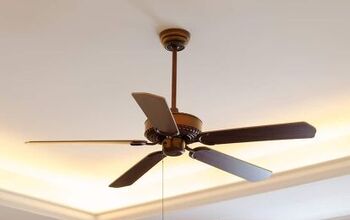How Many Watts Does A Microwave Use?

Have you ever noticed how on the back of frozen foods, the microwave instructions are never “one size fits all?” You hope that they provide a wattage chart so that you can determine the amount of time the food needs in your particular microwave. Still, you need to know how many watts your microwave uses.
The average home microwave uses between 1200 and 1300 watts of power. Standard microwaves have a wattage between 850 and 1,800 watts for medium to large models. Compact microwaves use 500 to 800 watts, and commercial microwaves can exceed 2,500 watts.
Various microwave models with varying wattages can make it very difficult to determine the correct setting on your microwave. If you’re not careful, the food comes out still partially frozen or overcooked. So, how can you determine how many watts a microwave uses and what you need for your home?
How Many Watts Does A Microwave Use?
Wattage refers to the operating power of electrical equipment, expressed in watts. As previously mentioned, the amount of watts a microwave uses is established by its volume. A microwave that is larger will have a much higher wattage and a greater power consumption.
The standard size microwave, most often found on a kitchen countertop, will use 850 to 1800 watts of power. Whereas, the most common wattage for the average, modern microwave is 1200 watts. The exact number will depend on the particular model and brand of microwave.
If you have a compact microwave in your dorm room, office or small apartment, it uses between 500 and 800 watts while heating. On the other hand, there are microwave ovens available up to 3000 watts. However, a wattage that is this high will most often be found in a restaurant, school cafeteria, or other commercial environment.
How Do I Determine How Many Watts My Microwave Uses?
Finding your microwave’s wattage can be as easy as searching the model on Amazon or any standard search engine. Examine the product description listed online or go directly to the manufacturer’s website to check the technical specification. You also may be able to locate a label with wattage information inside your microwave oven.
For ease, we’ve outlined the most common microwave oven capacities and their corresponding wattages in the table below. Although these are standard, they may vary depending on model and brand name.
Microwave Oven Capacity | Wattage |
0.6 – 0.7 cubic feet | 500 – 700 watts |
0.9 cubic feet | 900 watts |
1.1 cubic feet | 1000 watts |
1.6 cubic feet | 1100 watts |
2 cubic feet | 2000 watts |
Does How Many Watts Your Microwave Uses Affect Energy Costs?
Unless you have a microwave that is massive and is using up to 3000 watts of power, your overall energy costs will only amount to a few dollars, or even a few cents a year.
However, how much electricity your microwave uses while cooking and the exact amount that it costs you annually will depend on a few major factors:
- Your microwave’s wattage. Compact microwaves, beginning at 500 watts, and even conventional full-size microwaves will cost you much less than the larger, commercial types.
- How often you use your microwave. Microwaves utilize a far small amount of standby power, instead, most of their energy goes into the heating process. In this case, the more that you cook, the higher your microwave bill will be.
- The power settings you use. If you’re using your microwave at its full, 100% power then it will consume very close to the established wattage when in use. However, most microwaves provide the option of settings that can let you use a fraction of the max power. When you use settlings such as “melt” or “defrost,” your overall energy consumption will be slightly lower.
With that said, a microwave this is rated for 1,000 watts will consume about .02 kWh per minute (using the national average for electricity rate per kilowatt hour). If you were to use this microwave one minute every day for a year, it’ll cost you roughly 73 cents in cooking power – pocket change.
How Much Electricity Does A Microwave Use On Standby?
If you are a particularly conscious energy consumer, though minute, you know that your microwave is always using up some amount of power. That digital clock on the front simply isn’t powering itself.
The exact amount of power that your microwave uses while it is on standby, or not cooking, usually averages roughly five watts. However, if you want to know how much your specific microwave is using on standby, you can plug your microwave directly into an electricity monitor.
Consider this: standby power is always flowing whenever the microwave is plugged in, and for most, that’s a full 24 hours a day. At 12 cents per kWh, a unit that uses five watts on standby is going to cost you 44 cents a month, or about $5.26 per year. In fact, it’ll actually cost you more to power the digital clock than it does while it’s cooking food.
If this amount of energy seems wasteful to you, you can always unplug your microwave when it’s not in use. Consider using a power strip to connect all of your countertop appliances. That way, you can easily shut off the power to multiple standby power units at once.
What Microwave Do I Need?
Purchasing the right microwave for your household can be a challenge. Trying to navigate all of the various types, sizes and wattages may seem a little overwhelming. However, we’ve outlined everything you need to know to help make an informed decision on what microwave is best for you.
What Type of Microwave Do I Need?
The three types of microwaves can be broken down into over-the-range, built-in and countertop. For the most affordable, easy to install, portable option consider going with a countertop microwave. These are the most common types of microwaves out there and installation is as easy as unpacking the box and plugging it in.
Whereas their over-the-range and built-in counterparts are more expensive and you’ll generally need the assistance of a professional to install. They cannot usually be taken with you when you leave a home but are excellent at drawing odors and smoke up and away, filtering it before it’s distributed back into the room.
You can also get a microwave drawer. These aren’t as common as other microwave types, but they are excellent for saving counter space and making it easy to get things in and out of the micro. They also often come with warming features.
What Size Microwave Do I Need?
After you’ve determined the type of microwave that makes the most sense for your household, think about how much kitchen space you’d like to sacrifice. If you have limited counter space, you may want to side with a smaller model.
A countertop microwave’s internal capacity can range from 0.5 cubic feet (big enough to fit most conventional sized dinner plates) to just over 2 cubic feet (accommodates much larger cookware). The most common internal sizing is between 1 and 2 cubic feet.
However, keep in mind that the external measurements will vary so always check and measure your desired space to ensure that it will fit. Also, verify that you have an outlet in close proximity as it can be a real pain to have to fish wires.
How Many Watts Does My Microwave Need?
Deciding on the microwave wattage for your specific household will depend on your cooking and heating needs. While you may find microwaves with a wattage below 500, this is not recommended for anything but dehydrating foods. Cooking food in a microwave that is less than 500 watts is almost impossible.
A microwave that is between 500 and 800 watts is a cheaper option than the higher, more powerful wattages. At this range you’re able to steam and fry foods. Also, microwave dinners and other small foods do great at this power. Food items don’t take very long to cook at 500 to 800 watts but, in some cases, may cook unevenly.
Microwaves with wattages from 800 to 1,000 allow you to cook proteins, pop popcorn, boil rice, and bake small desserts effortlessly. However, you will need to make sure that the microwave is set to the required setting for each individual food type. Cooking under a higher wattage allows for an even faster cook time.
When it comes to microwaves that are higher than 1,000 watts, you’re heading into oven territory. These are very powerful units and, in some countries, they are regularly used to cook full meals. You can’t go wrong with purchasing a microwave over 1,000 watts as it will cook food quickly and efficiently.
Related Questions
Is 800 watts enough for a microwave?
Most recipes that require the use of a microwave are written to specify a power of at least 800 watts. This wattage ensures that the food cooks evenly and the final result is as desired. 800 watts is a great baseline for most households and going any lower may not be powerful enough for the type of recipes you plan to use it for.If you use your microwave for any type of specialty dishes that require a higher wattage, then make sure you pay attention to this when shopping. Remember, if you opt for a microwave with higher wattages you can always use the power settings to reduce the wattage.
How much should I spend on a microwave?
The price of a microwave will depend on its overall capacity, power, brand and particular features. If you’re looking for a good quality countertop microwave, you can expect to spend over $100. While there are cheaper models on the market, they’ll be much smaller and may not have the adequate cooking power you’re looking for.
How many watts does a stove use?
The majority of electric ovens use between 2,000 and 5,000 watts, averaging out around 3,000 watts. The burner size will affect how many watts your stove uses.For example, larger burners will use closer to 2,500 to 3,000 watts, on average, when on the highest setting. However, medium burners will use only about 1,500 to 1,800 watts. A small burner might only use about 1,20o watts.However, if you have multiple things cooking on the stove at once, your stove will use much more wattage. You can get a rough idea by averaging out the above numbers. For example, say you’re using a large burner to boil water at 2,500 watts, while you keep a sauce warm on a simmering burner at low heat for about 800 watts.Then, you have a side dish cooking on a medium burner at medium-high heat at about 1,100 watts. If you add these three together you can get your average wattage. So, in this scenario, your stove is pulling about 4,400 watts to prepare this particular meal.

Jessica considers herself a home improvement and design enthusiast. She grew up surrounded by constant home improvement projects and owes most of what she knows to helping her dad renovate her childhood home. Being a Los Angeles resident, Jessica spends a lot of her time looking for her next DIY project and sharing her love for home design.
More by Jessica Stone



























